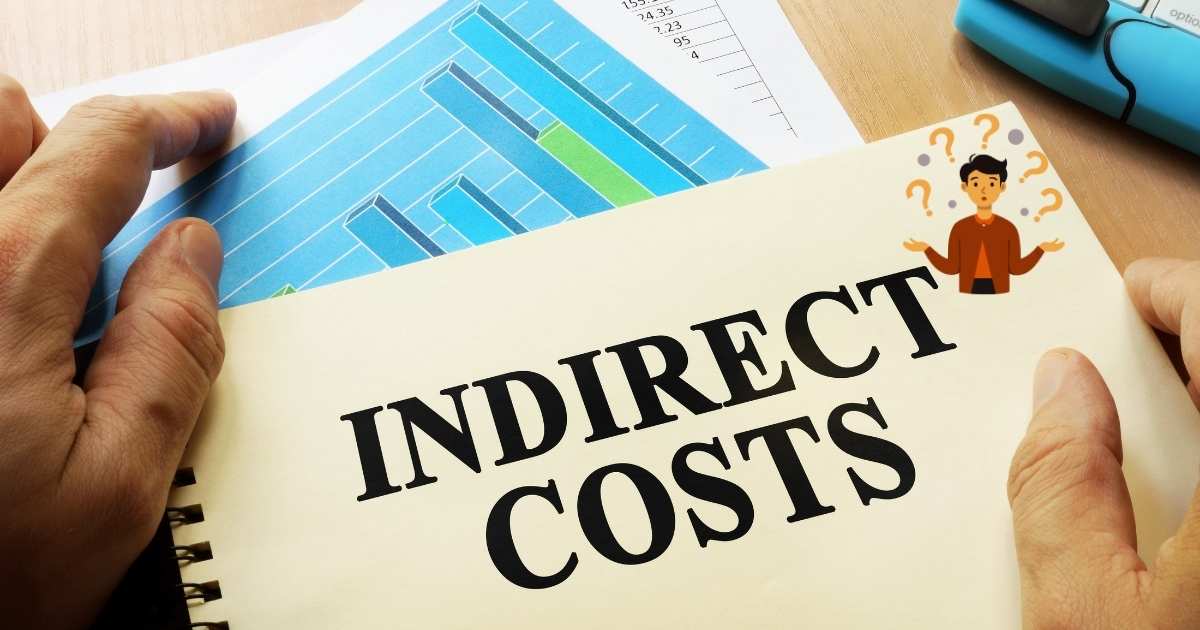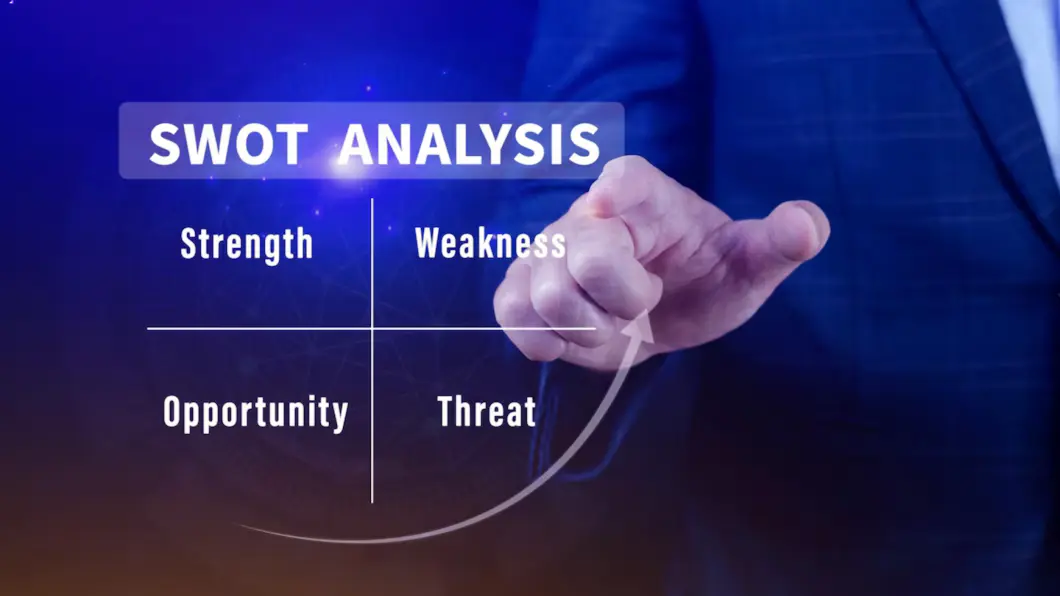Cost analysis is a crucial process for businesses across different sizes and industries. It provides valuable insights into your company’s cost structures and spending patterns. As a business owner, you can discover new cost-saving opportunities and forecast the financial outcomes of your decisions. By adopting the right strategy, you can improve your company’s financial health and achieve long-term stability.
In this blog, let’s deep dive into the concept of indirect costs — expenditures that are not directly tied to your products or services. We will discover why analyzing them regularly is so important and how you can leverage modern technological solutions such as ERP software for real-time cost tracking & analysis, financial planning & budgeting, and sustained financial growth. Let’s begin.
What are Indirect Costs?
Indirect costs include all the costs incurred by a business that are not directly related to the production of goods or services, but are supportive of everyday business functioning. These costs include the electricity bill, office rent, advertisement expenditure, insurance premiums, marketing costs, and administrative expenses, among others.
While direct costs always change with changing production volume, indirect costs may or may not change. Their consistent and accurate reporting allows businesses to achieve greater control over their costs, improve profit margins, and become equipped to plan for future needs.
Examples of Indirect Costs
-
Employee Salaries
These include the salaries paid to the employees who are not directly involved in the production activity. Different businesses may adopt different strategies. For example, some businesses hire full-time employees, while others hire remote employees who charge on a fixed hourly rate basis.
-
Stationary Expenses
These include the vital resources that are an essential part of your company’s everyday operations. They include printing & stationery, notebooks, pens, and other accessories required for routine tasks. Typically, these expenditures eat up only a small portion of your profits.
-
Office Rent
The office rent refers to the rental paid for the possession of your office space. Small businesses with limited capital and resources often adopt a remote workforce to minimize their office rent and free up working capital.
-
Litigation Costs
These are the costs incurred by businesses for fighting litigations in the court of law. These include fees paid to the attorney, court filing fees, charges paid to the witnesses, and other legal expenditures incurred.
-
Utilities Bills
Your company’s phone and Internet bills, electricity & water charges, and cooling & heating costs are included in the utilities bills. Seasonal changes, adoption of new technology, and other factors can cause fluctuations in your utility bills.
Difference Between Direct Costs and Indirect Costs
| Direct Costs | Indirect Costs | |
| Concept | Directly linked to the production of goods and services | Incurred as part of indirect and administrative activities |
| Examples | Wages to line workers (direct labor), and raw materials & ingredients | Salaries to employees, printing & stationery, marketing, insurance, and utility bills |
| Effect of Production Output | May increase or decrease with changes in the production output | Not directly tied to the production output |
| Benefits | Critical for strategic pricing and decision-making, and profitability analysis | An important factor for profitability analysis, performance evaluation, and resource allocation |
| Classification | Included in the Cost of Goods Sold (COGS) | Classified as Overhead Expenditures. |
| Nature of Costs | Variable Costs | Fixed, Variable, or Semi-variable costs |
| Assignability to Cost Object | Directly assignable to a specific cost object (such as a product) | Not directly assignable to a specific cost object |
Different Types of Indirect Costs
1. Fixed Indirect Costs
These costs remain the same irrespective of the changes in the production output. Even if the company stops its production activity, it will continue to incur them.
Examples:
- Office rent
- Staff salaries
- Property taxes
- Insurance
- Machine depreciation
2. Variable Indirect Costs
These are the opposite of fixed indirect costs. Any changes in the production activity can impact these costs, although they are still not related to the production activity.
Examples:
- Water & electricity bill
- Commission to sales staff (target-based)
- Office supplies
- Machine repair and maintenance
- Product packaging materials
3. Semi-variable Indirect Costs
These consist of both the fixed and variable indirect costs. A portion of these costs may remain consistent despite changes in the production volume, while another portion may change.
Examples:
- Telephone and Internet bills with a fixed charge and fluctuating usage fees
- Salaries paid to supervisors may cover overtime based on production demands
- Fuel costs for product delivery vehicles
How Does Analyzing Indirect Costs with an ERP Benefit Businesses?
-
Set Realistic Pricing Strategies
Setting realistic pricing strategies is only possible when businesses implement an ERP application to estimate their direct and indirect costs. Without knowing the indirect costs, they will not be able to cover their costs and increase profit margins.
-
Allocate Resources Efficiently
Without an estimate of your indirect costs, you may not be able to allocate your resources efficiently. Identify new areas of improvement, align resources to underperforming projects and assets, and improve overall efficiency.
-
Realistic Financial Forecasts
Get realistic financial forecasts about your overhead expenditures and anticipate future cash flow crunches with financial management software. Achieve your financial goals and make proactive changes to your business strategies through robust financial planning and budgeting.
-
Implement Cost-saving Measures
Monitor your indirect expenses, keep them under control, and implement new cost-saving measures. Act quickly to change market dynamics and maintain competitiveness at all levels.
-
Financial Compliance
Streamline compliance management and stay compliant with changing regulatory requirements. Ensure stringent adherence to local laws and regulations with timely & accurate financial planning, and consistent fraud detection.
How Sage ERP Helps Manage Your Indirect Costs?
-
Rich Financial Insights
Sage ERP is a strategic solution that provides up-to-the-minute financial insights across different departments at every level. Stay vigilant of the potential financial risks, and don’t let your projects overrun.
-
Smooth Financial Workflow
This best ERP software in India consolidates data from different business levels and streamlines key financial operations for audit-readiness. It supports multi-company, multi-country, and multi-currency functionality for comprehensive reporting.
-
Costing & Budget Accounting
Use the advanced budgeting and forecasting algorithms to gain deep insights into market trends and control costs. Whether it is managing your general ledger, expenditures, or cost & analytical accounting, or converting raw data into actionable insights, your Enterprise Resource Planning tool handles every task seamlessly.
-
AP & AR Automation
Use the AP automation and AR automation modules to automate your payables and receivables. Speed up your invoice processing, improve vendor relationships, reduce manual intervention, and reduce the risk of late fees.
-
Flexibility & Customizability
Sage ERP is a flexible solution that can handle your increasing resource needs without affecting the performance or efficiency. Moreover, you can customize it for your unique business needs and industry requirements.
Gain Complete Financial Visibility & Control Costs with Sage X3
Businesses, whether small, medium, or large, can sometimes find themselves cash-strapped. With the right tools, they can gain complete financial control, protect profit margins, and monitor spending patterns. Track, allocate & control your finances, drive smarter decisions, and control costs across the product lines for sustained growth.
Sage X3 is the central hub for your complete financial visibility. Gain real-time insights into indirect costs across different projects and departments, allocate your resources efficiently, and improve your relationship with external stakeholders. Get a sweeping overview of your financial position, build better pricing models, enhance profit margins, and get a strategic advantage over your competitors.






